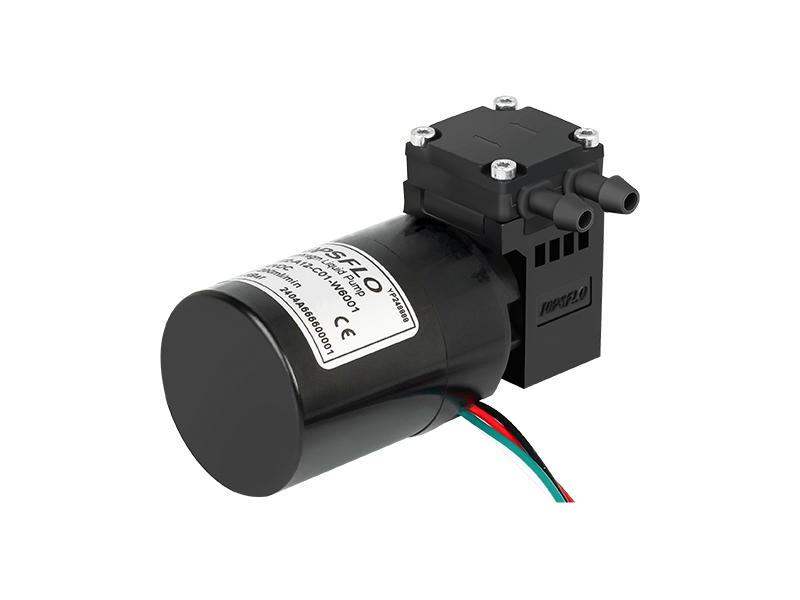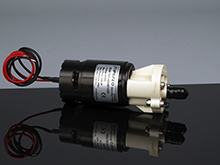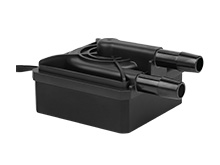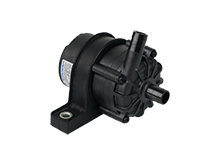What to Consider When Choosing a Pump
Knowing the specific fluid pumping requirements of an application up front in the development process is important. Unfortunately many device and system designers neglect to consider the fluid pumping requirements until late in the design process. Many times a designer will have to perform costly alterations to systems or devices to make their design compatible with a pump chosen late in the design process. Being that many times a pump is the “heart” of a system, it makes sense to begin the specification process early rather than later. Careful planning saves not only time and money, but also headaches.
Consider the following items when designing a device that requires a fluid pump:
• Will the pump be self-priming or will it require flooded suction? This is an important factor when considering the positioning and available space for the pump in the system or device.
• Available space and positioning: Problems arise when a design includes “space” for a pump but an actual pump has not been specified. There are many stories of OEMs requesting pumps to fit in small spaces, only to find out that the space will not accommodate the type and size of pump necessary to perform the application’s requirements. Specifying a pump early, rather than later, will assist in the sizing and positioning of a pump and its surrounding space. This promotes pumping efficiency and assists in eliminating costly redesigns.
•The system’s required flow and pressure: Many variables in a system impact the flow and pressure. Understanding the flow and pressure requirements is a starting point to choosing the correct pump. Adding a pump to the system also makes an impact. This is another reason that a pump should be specified early on.
• Wetted materials, fluid, fluid temperature: The materials of the pump components that will be in contact with the pumped fluids are the wetted materials. It is important to understand the materials of the pump and their inherent limitations. Are the materials chemically compatible with the fluid being pumped? Can the materials handle the temperature of the pumped fluid?• Power requirements: AC or DC?
• Environment (temperature, humidity, etc.) The environment plays an important role in pump performance and can affect the life of the pumps. For instance, is there a circulation of air present to help keep the pump cool or will the pump be in an environment where there is not much airflow? Will the environment be one of high humidity where the pump must be resistant to water?
• Continuous run: Does the application require that the pump run continuously or only in short intervals? Knowing the answer to this question, as well as understanding the surrounding environment (heat, humidity), will also affect the life of the pump and its design elements. As illustrated by the previous list, there are many items to consider when specifying a pump for an OEM application. While this list is a good starting point, there are many variables to consider when deciding on the right pump to get the job done. When in the process of specifying a pump, it is important to choose a supplier that is willing to listen to the specific needs of a project and make suggestions and proposals based on those needs.
Some things to consider when choosing a pump supplier:
• OEM or off-the-shelf pump? Does the supplier only offer off-the-shelf (OTS) pumps? This is fine if a pump is identified that matches up with a system’s requirements and specifications. However, considering the previous list, it could be difficult to find an OTS pump that is able to adapt to all of the application’s variables. Working with an OEM pump manufacturer to design a custom pump may initially be more costly. However, in the long run, choosing a supplier that considers all of the application’s details and requirements will provide the best options, long-term success, and ROI
• OEM: Does the pump supplier have a history of working in the original equipment market? What are their engineering and manufacturing capabilities? Do they outsource their engineering or manufacturing? If so, how do they test for quality? What are their quality standards? What about their performance and life testing practices? Is a company representative avail-able who can address technical questions or are email or the company website the only “discussion” options? These are all important questions when researching a pump supplier.
Traveling supplier? Is the supplier open to visiting an OEM’s facility in order to get a first-hand look at an application? Even though technology allows the world to communicate much easier, nothing beats the “up close and personal” care given by an in-person visit.
• Avoid knock-offs: It is very tempting when working with a tight budget to cut corners on components. While there are many reputable pump suppliers that will take care of an OEM’s needs, there are also many suppliers that create “knock-off” pumps, or cheap copies of pumps sold by legitimate pump manufacturers. These companies are able to sell cheap by using less than standard components or work forces that do not hold to any type of quality standards. In the short term, pumps are more affordable; in the long term, one will find problems with consistency, reliability, and quality.
Understanding the need and importance of a pump in an OEM application is the first step in specifying the correct pump. Specifying a pump early and choosing a reputable supplier will have an important impact on the application’s function, life, and reliability. For more information, visit www.topsflo.com.
Many problems arise when a design includes “space” for a pump but an actual pump has not been specified. Specifying a pump early, rather than later, will assist in the sizing and positioning of a pump and its surrounding space. This promotes pumping efficiency and assists in eliminating costly redesigns.
Understanding your own systems flow and pressure requirements is a starting point to choosing the correct pump. Adding a pump to the system also makes an impact. This is another reason that a pump should be specified early on.
The materials of the pump that come in contact with the pumped fluid are the wetted materials. It is important to understand the material of construction of the pump and it inherent limitations. Are the materials chemically compatible with the fluid being pumped? Can the materials handle the temperature of the pumped fluid?
When looking for a pump supplier, it is important to understand how the company tests for quality and its quality standards.














